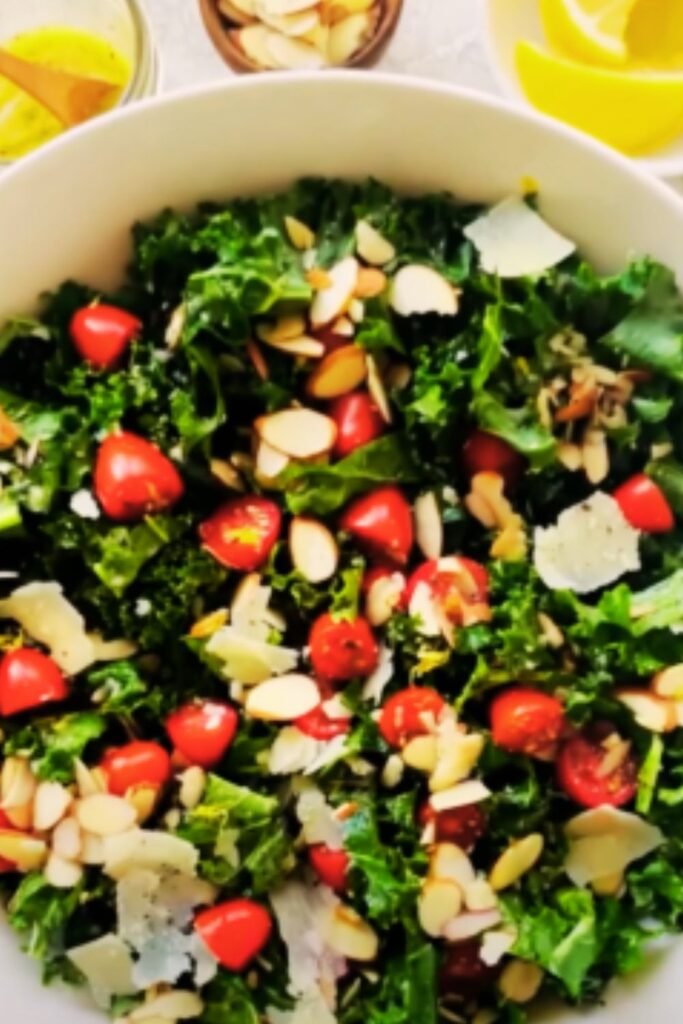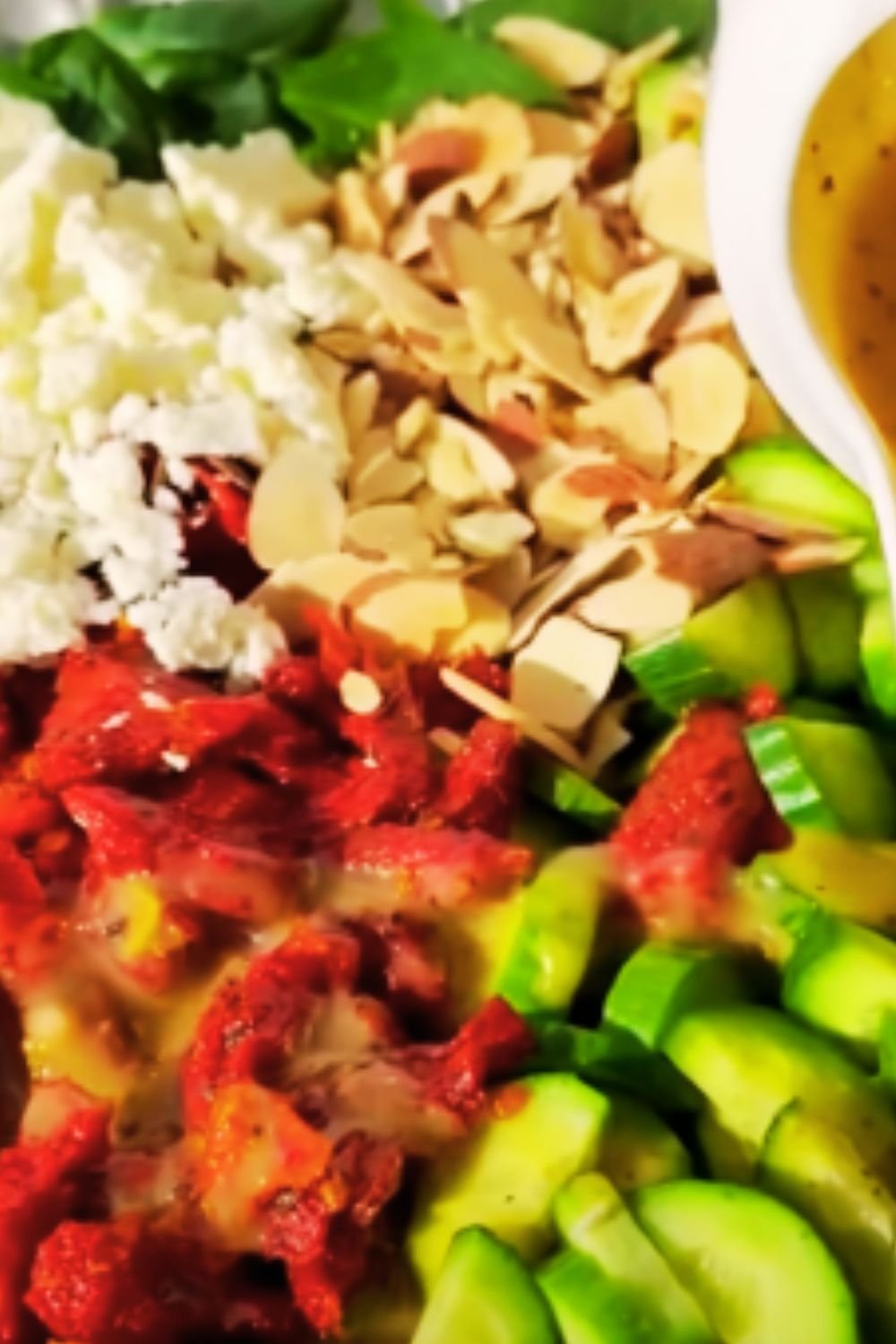There’s something magical about a perfectly dressed kale salad. The robust, earthy flavor of kale paired with a bright, zesty dressing creates a combination that makes your taste buds sing. Today, I’m sharing my absolute favorite lemon kale salad dressing that transforms ordinary kale into a crave-worthy dish. This isn’t just any dressing—it’s the perfect balance of tangy lemon, rich olive oil, and carefully selected seasonings that will make even kale skeptics come back for seconds.
Why This Lemon Kale Dressing Works So Well
When I first started experimenting with kale salads, I quickly learned that kale needs a special kind of dressing. Unlike delicate lettuce leaves, kale’s sturdy structure can handle robust flavors, and actually benefits from a bit of acid to break down its fibrous texture. This lemon-based dressing does exactly that—it tenderizes the kale while infusing it with mouthwatering flavor.
The secret to this dressing’s success lies in its perfect balance. The acidity from fresh lemon juice cuts through kale’s bitterness, while good quality olive oil adds richness and body. A touch of sweetness from honey balances everything out, and a hint of garlic provides depth without overpowering the other ingredients.
I’ve been making this dressing for years, tweaking the proportions until I found the perfect formula. Trust me when I say this recipe will become your go-to kale dressing once you try it!
Ingredients You’ll Need
For this magical elixir that transforms tough kale into a delicacy, you’ll need ingredients that are likely already in your pantry:
- Fresh lemon juice: 1/4 cup (about 2 lemons) – The star of our show, providing brightness and acidity
- Extra virgin olive oil: 1/3 cup – Look for a good quality one with a fruity, peppery flavor
- Dijon mustard: 1 tablespoon – Acts as an emulsifier and adds complexity
- Honey or maple syrup: 1-2 teaspoons – Balances the acidity with subtle sweetness
- Fresh garlic: 1 small clove, minced – Provides aromatic depth
- Sea salt: 1/4 teaspoon – Enhances all other flavors
- Fresh black pepper: 1/4 teaspoon – Adds a subtle bite
- Optional add-ins: 2 tablespoons nutritional yeast (for cheesy flavor), 1 teaspoon dried herbs (like oregano or thyme), or 1/4 teaspoon red pepper flakes (for heat)
Ingredient Substitutions
Life happens, and sometimes you don’t have exactly what you need. Here are some substitutions that work well:
Lemon Juice Alternatives: : Apple cider vinegar can work in a pinch (use 3 tablespoons and add a bit more honey) : White wine vinegar has a milder flavor but still provides necessary acidity
Sweetener Options: : Maple syrup gives a slightly different flavor profile but works beautifully : Agave nectar is another good vegan alternative : Even a pinch of sugar can work if you’re out of liquid sweeteners
Mustard Substitutes: : Whole grain mustard adds interesting texture : Yellow mustard will change the flavor but still helps with emulsification : Mustard powder (1/2 teaspoon) can be used if no prepared mustard is available
Equipment You’ll Need
One of the things I love about this dressing is how simple it is to prepare. You’ll only need basic kitchen equipment:
- Small mixing bowl or jar with lid
- Whisk or fork
- Measuring spoons and cups
- Citrus juicer or reamer (optional but helpful)
- Garlic press (optional)
Step-by-Step Instructions
Making this dressing couldn’t be easier. Follow these simple steps:
- Juice the lemons: Cut your lemons in half and squeeze to extract 1/4 cup of fresh juice. Remove any seeds.
- Mince the garlic: Peel and finely mince one small clove of garlic. If you’re sensitive to raw garlic, you can use a microplane to grate it extra fine.
- Combine wet ingredients: In your bowl or jar, combine the lemon juice, olive oil, Dijon mustard, and honey or maple syrup.
- Add seasonings: Add the minced garlic, salt, pepper, and any optional add-ins you’re using.
- Emulsify: If using a bowl, whisk vigorously until well combined and slightly thickened. If using a jar, seal tightly and shake well for about 30 seconds.
- Taste and adjust: Dip a piece of kale into the dressing to taste. Adjust seasonings if needed – more honey for sweetness, more salt for flavor enhancement, or more lemon for acidity.

The Massaging Technique
Here’s where the magic really happens. For the best kale salad experience, you need to massage this dressing into the kale:
- Prepare the kale: Remove tough stems and tear or chop leaves into bite-sized pieces. Wash and thoroughly dry the kale (a salad spinner works great for this).
- Add dressing: Place kale in a large bowl and drizzle about two-thirds of the dressing over it.
- Massage: Using clean hands, massage the dressing into the kale for 2-3 minutes. Yes, actually massage it! Squeeze and scrunch the leaves between your fingers. You’ll feel the kale begin to soften and break down.
- Rest: Let the dressed kale sit for at least 10 minutes before serving. This allows the acids in the dressing to further tenderize the leaves.
- Add remaining dressing: Before serving, taste and add more dressing if needed.
This massaging technique transforms the kale from tough and fibrous to tender and delicious. Don’t skip this step!
Nutritional Benefits
This dressing isn’t just delicious—it’s actually good for you too! Here’s a breakdown of the nutritional powerhouses in this recipe:
| Ingredient | Key Benefits | Nutritional Highlights |
|---|---|---|
| Lemons | Rich in vitamin C, aids digestion | One lemon contains over 30mg of vitamin C; helps iron absorption |
| Extra virgin olive oil | Heart-healthy fats, anti-inflammatory | Contains oleocanthal (anti-inflammatory compound); rich in vitamin E |
| Garlic | Immune-boosting, heart health | Contains allicin (powerful antioxidant); may help lower blood pressure |
| Honey | Antioxidants, soothing properties | Contains various bioactive plant compounds; natural energy source |
| Dijon mustard | Low calorie flavor enhancer | Contains selenium and magnesium; aids digestion |
| Kale (when dressed) | Multiple vitamin powerhouse | One cup contains more than 100% daily value of vitamins A, C, and K |
When you combine these ingredients with nutrient-dense kale, you’re creating a dish that’s both delicious and nourishing. The fat in the olive oil even helps your body absorb more of the fat-soluble vitamins (like vitamins A and K) present in kale.
Variations to Try
While the classic recipe is perfect as is, I love experimenting with different flavor profiles. Here are some delicious variations:
Mediterranean Style
- Add 1 tablespoon finely chopped fresh oregano
- Include 1 teaspoon lemon zest
- Mix in 1 tablespoon grated Parmesan cheese
Asian-Inspired
- Substitute 1 tablespoon rice vinegar for half the lemon juice
- Add 1 teaspoon sesame oil
- Include 1/2 teaspoon grated ginger
- Use 1 teaspoon soy sauce in place of salt
Creamy Version
- Add 1 tablespoon Greek yogurt or tahini
- Increase garlic to 2 small cloves
- Include 1 tablespoon finely chopped fresh dill
Spicy Citrus
- Add 1/4-1/2 teaspoon red pepper flakes
- Include 1 tablespoon orange juice
- Add 1/2 teaspoon orange zest

Storage Tips
This dressing keeps beautifully, which means you can make a batch ahead of time for quick salads throughout the week. Here’s how to store it properly:
- Refrigeration: Store in an airtight container in the refrigerator for up to 1 week.
- Olive oil solidification: Don’t be alarmed if the olive oil solidifies when chilled—this is normal! Simply let the dressing sit at room temperature for 5-10 minutes and shake or whisk before using.
- Pre-dressed kale: Uniquely, kale dressed with this dressing can be stored in the refrigerator for 1-2 days without becoming soggy. In fact, the flavor often improves as it sits!
- Make ahead for meal prep: Consider making a double batch on Sunday for quick salads throughout the week.
Serving Suggestions
This versatile dressing pairs beautifully with kale, but its uses extend far beyond a simple salad. Here are some of my favorite ways to use it:
- Classic kale salad base: Add avocado, toasted nuts, and dried cranberries
- Grain bowls: Drizzle over quinoa or farro bowls with roasted vegetables
- Marinade: Use as a quick marinade for chicken breast or tofu (30 minutes is enough!)
- Sandwich spread: Brush on bread before building a gourmet sandwich
- Roasted vegetables: Toss with vegetables before or after roasting for extra flavor
- Pasta salad dressing: Perfect for cold pasta salads with cherry tomatoes and cucumbers
- Dip for crusty bread: When you want something lighter than olive oil for fresh bread
For a complete meal using this dressing, I love to create a loaded kale salad with:
- Massaged kale (with this dressing)
- Roasted sweet potatoes
- Chickpeas (plain or roasted)
- Sliced avocado
- Pumpkin seeds or sunflower seeds
- Quinoa or farro for extra staying power
- A sprinkle of feta cheese or nutritional yeast

Troubleshooting Common Issues
Even with a simple recipe, things can sometimes go wrong. Here are solutions to common dressing dilemmas:
Dressing Separates Quickly: : Make sure you’re whisking vigorously or shaking very well : Try adding a bit more Dijon mustard, which is a natural emulsifier : Blend in a blender or food processor for a more stable emulsion
Too Acidic: : Add more honey or maple syrup, 1/2 teaspoon at a time : Add a touch more olive oil to balance the acidity : A pinch of baking soda can neutralize extreme acidity
Too Bland: : Add more salt and pepper : Increase garlic amount : Add fresh herbs or a pinch of red pepper flakes : Try including some nutritional yeast for umami depth
Dressing Too Thick: : Add a splash of water, 1 teaspoon at a time : Add more lemon juice if you want more acidity
Kale Still Too Tough: : Massage longer and more vigorously : Let dressed kale sit longer before serving (up to an hour) : Cut or tear kale into smaller pieces
Why Make Your Own Dressing?
I used to buy bottled salad dressings until I realized how simple, economical, and much healthier it is to make my own. Here’s why I’ll never go back to store-bought for my kale salads:
- Cost-effective: This homemade dressing costs a fraction of premium store-bought versions
- No preservatives or additives: Just clean, whole food ingredients
- Customizable: Easily adjust to your taste preferences
- Fresher flavor: Nothing compares to the bright taste of freshly squeezed lemon
- Environmentally friendly: Reduces plastic bottle waste
- Quick to make: Takes less than 5 minutes from start to finish
When I calculated the cost, this homemade dressing comes out to roughly $0.70 per serving, compared to $3-5 for a comparable quality store-bought organic dressing.
Questions & Answers
Q: Can I make this dressing oil-free? While olive oil provides important texture and helps nutrients absorb, you can substitute part or all of the oil with a ripe avocado (blended) for a creamy oil-free version. You may need to add a bit of water to thin to desired consistency.
Q: How long can I store homemade dressing? This dressing keeps well in the refrigerator for up to 7 days when stored in an airtight container. The acid in the lemon juice acts as a natural preservative.
Q: My kale still tastes bitter. What am I doing wrong? Three things help reduce kale’s bitterness: proper massage technique (don’t be gentle!), sufficient dressing (don’t skimp), and time (let it rest at least 10 minutes). Also, baby kale tends to be less bitter than mature kale.
Q: Can I use bottled lemon juice instead of fresh? While fresh is always best for optimal flavor, bottled can work in a pinch. Reduce the amount slightly as bottled tends to be more concentrated and acidic.
Q: Is this dressing suitable for special diets? Yes! This dressing is naturally gluten-free and can be vegan if you use maple syrup instead of honey. It’s also paleo-friendly, dairy-free, and can be adapted for most dietary needs.
Q: Can I use this dressing on other greens besides kale? Absolutely! While specially designed for kale, this dressing works wonderfully on any robust green like romaine, spinach, arugula, or mixed greens. It’s particularly good on grain bowls too.
Q: The olive oil solidified in my refrigerator. Is the dressing bad? Not at all! This is a natural property of good quality olive oil. Simply let it sit at room temperature for 5-10 minutes before using, then shake well.
The Secret to Truly Great Kale Salad
After years of making kale salads, I’ve discovered that the secret goes beyond just a good dressing—it’s about the entire process. Here are my top tips for kale salad perfection:
- Remove those stems: The stems are tough and fibrous. Either cut them out completely or slice them very thinly.
- Size matters: Tear or chop kale into smaller pieces than you would lettuce. This increases surface area for the dressing and makes each bite more manageable.
- Massage with intention: Don’t just toss the dressing with the kale—really work it in with your hands for at least 2-3 minutes. You should feel the leaves softening as you go.
- Be patient: Let the dressed kale sit for at least 10 minutes (up to an hour is even better) before serving.
- Balance textures: Kale has a robust texture, so pair it with something creamy (avocado, goat cheese), something crunchy (nuts, seeds), and something sweet (dried fruit, roasted sweet potatoes).
- Make it a meal: Add protein like chickpeas, quinoa, grilled chicken, or tofu to turn your salad into a satisfying main dish.
When you follow these steps and use this amazing lemon dressing, you’ll create kale salads that people actually crave rather than eat just because they’re healthy.
Conclusion
This lemon kale salad dressing has truly transformed how I feel about kale. What was once a “should eat” vegetable has become a “want to eat” delight in my kitchen. The bright, tangy flavors of this dressing perfectly complement


